In the earliest days of the modern (or commercial) period of Inuit artistic production, Inuit hunters were encouraged to carve what they knew. Apart from the obvious depictions of the everyday activities of hunting and camp life, carvers often looked to Arctic fauna for inspiration. As members of a hunting culture, Inuit relied upon all manner of creatures for their survival, and their intimate knowledge of these creatures was immediately obvious to viewers. Inuit viewed polar bears as their only serious hunter-rivals; bears were not simply prey, but rather were respected almost as equals. For several examples of early gems please see lots 1, 2, 3, 109, and 110.
It is important to note that for the first few years, or even decades, after the first Southern exhibition of Inuit art in 1949, communication between the centres of artistic production in the North and the Southern market was sketchy at best. Almost all shipments of Inuit art were done via maritime transport on the annual “sea lift.” Most settlements were only able to ship carvings once a year and the resultant lag between creation, shipping, exhibition, and sale could be quite protracted. While there might have been local feedback from local buyers and traders, the lack of “market” feedback meant that early carvers produced a tremendous variety of subjects without really knowing their audience’s taste. It took several years before market forces could influence (either at the conscious or subconscious level) their artistic choices.
Inevitably, despite the distances between the North and the South, those responsible for the promotion and marketing of Inuit began to analyze what was selling and what wasn’t. As a result of Southern demand, the Ursus Maritimus (polar bear) became a preferred subject for Southern galleries and many collectors. This apex Arctic predator found itself at the top of the artistic food chain as well! In relatively short order, Inuit artists came to realize that once-common subjects such as wolverines, otters, and lemmings were little in demand. Bears sold much more readily (and often for more money) than other subjects requiring similar effort. Polar bears were rivalled only by birds as popular animal subjects.
Such was the demand for polar bears that before long, everyone was trying their hand at making them. Alas, not all efforts were equally successful. Presumably, dealers and collectors started to notice how exceptionally talented certain artists were and demanded to know more about them. As this news arrived in the North, many carvers began to pridefully inscribe their given names alongside (or replacing) their disc numbers as signatures. One might even argue that it was the majestic polar bear that was largely responsible for the cult of personality in Inuit sculpture as collectors began to specifically ask for bears by carvers such as Pauta (Saila) or Henry (Evaluardjuk) by name.

Lot 1
NIVIAQSI (NIVIAKSIAK) (1908-1959) KINNGAIT (CAPE DORSET)
Polar Bear, c. 1957-59
ESTIMATE: $3,000 — $5,000
We are most fortunate to be able to include a wonderful array of ursine excellence in our December live auction beginning with the very first lot! Prior to his untimely death in 1959 Niviaqsi was already recognized as a noted polar bear sculptor. With his Polar Bear from c. 1957-59 we can certainly see what all the fuss was about! What a rare treat it is to see other early depictions of the polar bear in Inuit sculpture. Many of the first works to descend from the North hailed from Inukjuak, which at that time was home to a disproportionate number of talented sculptors.
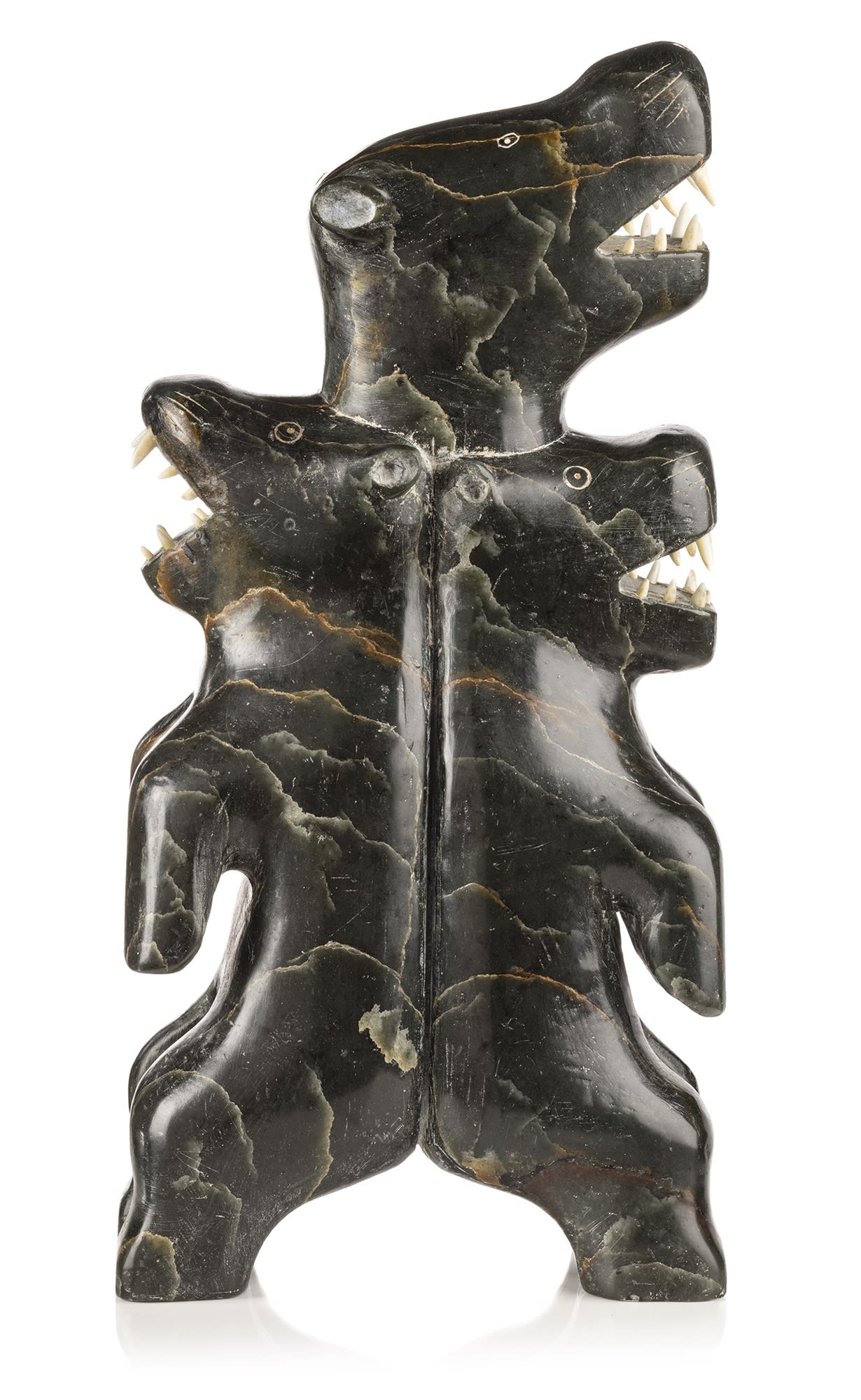
Lot 1 15
PROBABLY AMIDLAK (1898-1961) or LEVI AMIDLAK (1931-1998/99) INUKJUAK (PORT HARRISON)
Totemic Composition with Bears, c. 1953-54
ESTIMATE: $10,000 — $15,000
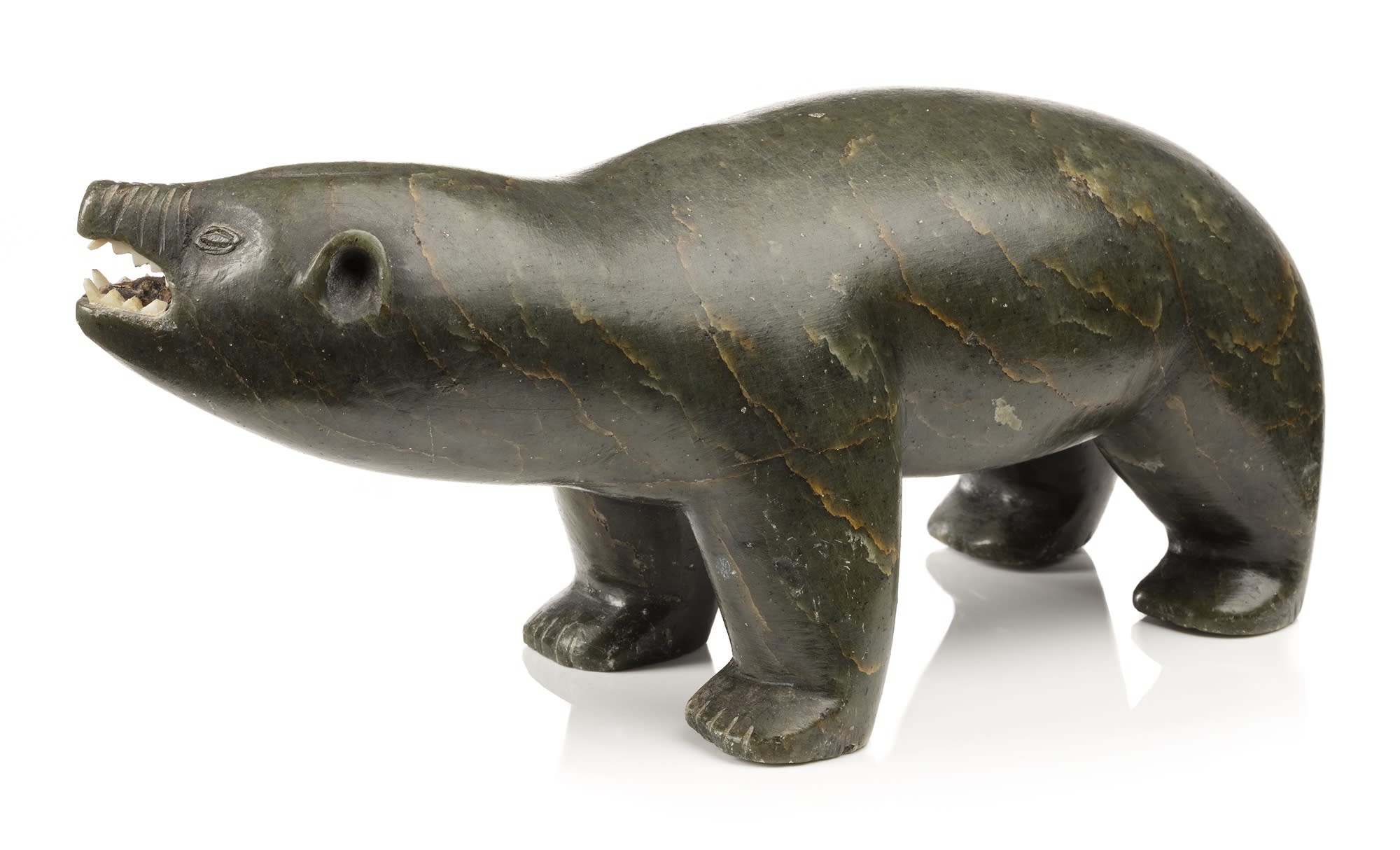
Lot 116 (EH4871)
Lot 1 16
POSSIBLY ELIJASSIAPIK (1912-1972) INUKJUAK (PORT HARRISON)
Snarling Polar Bear, c. late 1950s
ESTIMATE: $2,500 — $3,500
The decade of the 1950s is arguably when the works from Inukjuak were at their finest. Likely inspired by a Houston drawing of a totem, the spectacular Totemic Composition with Bears by Amidlak or his son Levi (Lot 115) is a stunning testament to the Inuit imagination. As mentioned in our catalogue description, this piece draws our attention to “bearness” in much the same way as do Pauta’s bears. This totem is a nice contrast to the somewhat later 1950s Snarling Polar Bear, possibly by Elijassiapik (lot 116). In this latter example the artist has presented us with a formidable and naturalistic specimen. We love how both works feature wonderfully inset dentition, the former with charming stalagmites and stalactites and the latter with saw-toothed chompers. Interestingly, the use of inlay was far more common in Inukjuak than elsewhere, particularly in the 1950s, but less so by the end of the decade.
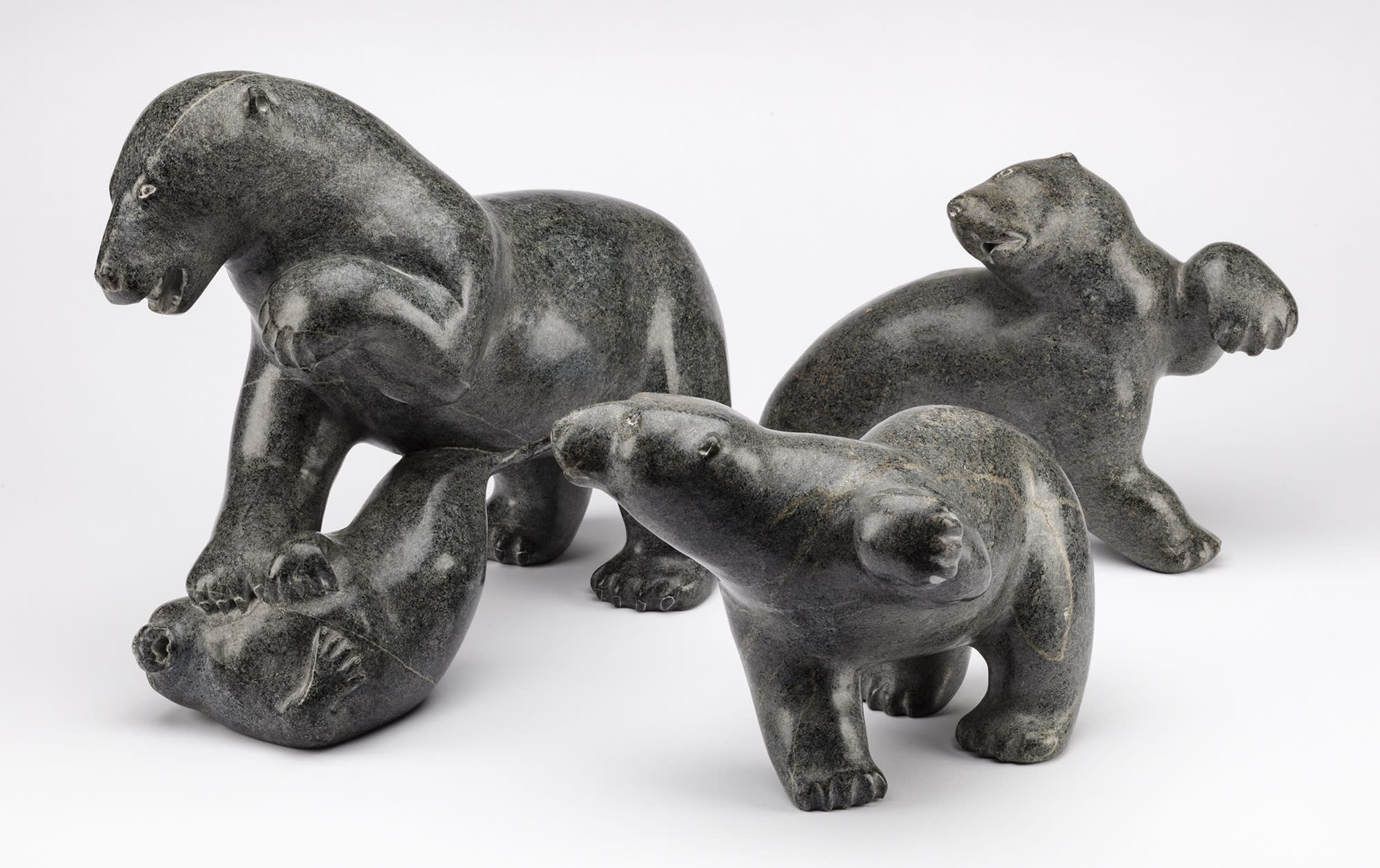
Lot 97
NUTARAALUK UILIA IYAITUK (1943-2005) IVUJIVUK
Mother Polar Bear with Cubs, 1980s
ESTIMATE: $8,000 — $12,000
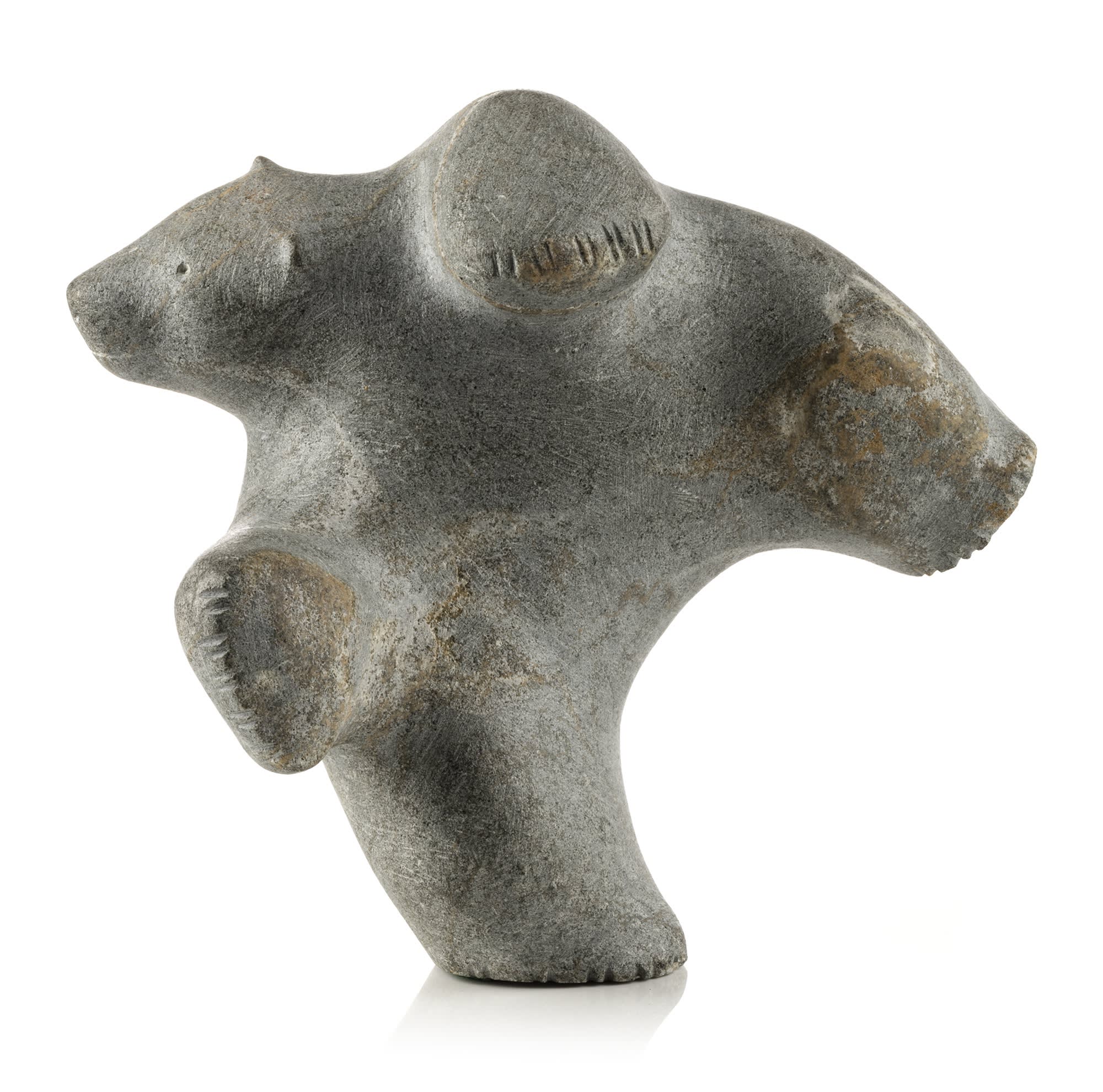
Lot 98
PAUTA SAILA, R.C.A. (1916-2009) KINNGAIT (CAPE DORSET)
Dancing Bear, c. mid 1970s
ESTIMATE: $5,000 — $8,000
Two later sculptures present us with a wonderful juxtaposition in the presentation of the polar bear. Lot 97 is a wonderfully realistic depiction by the Ivujivik artist Nutaraaluk Iyaituk, of a mother bear teaching her children how to hunt and thus provide for themselves. Lot 98 is a small and beautifully stylized interpretation by the great Pauta Saila, offering us a delightful and humorous cub.
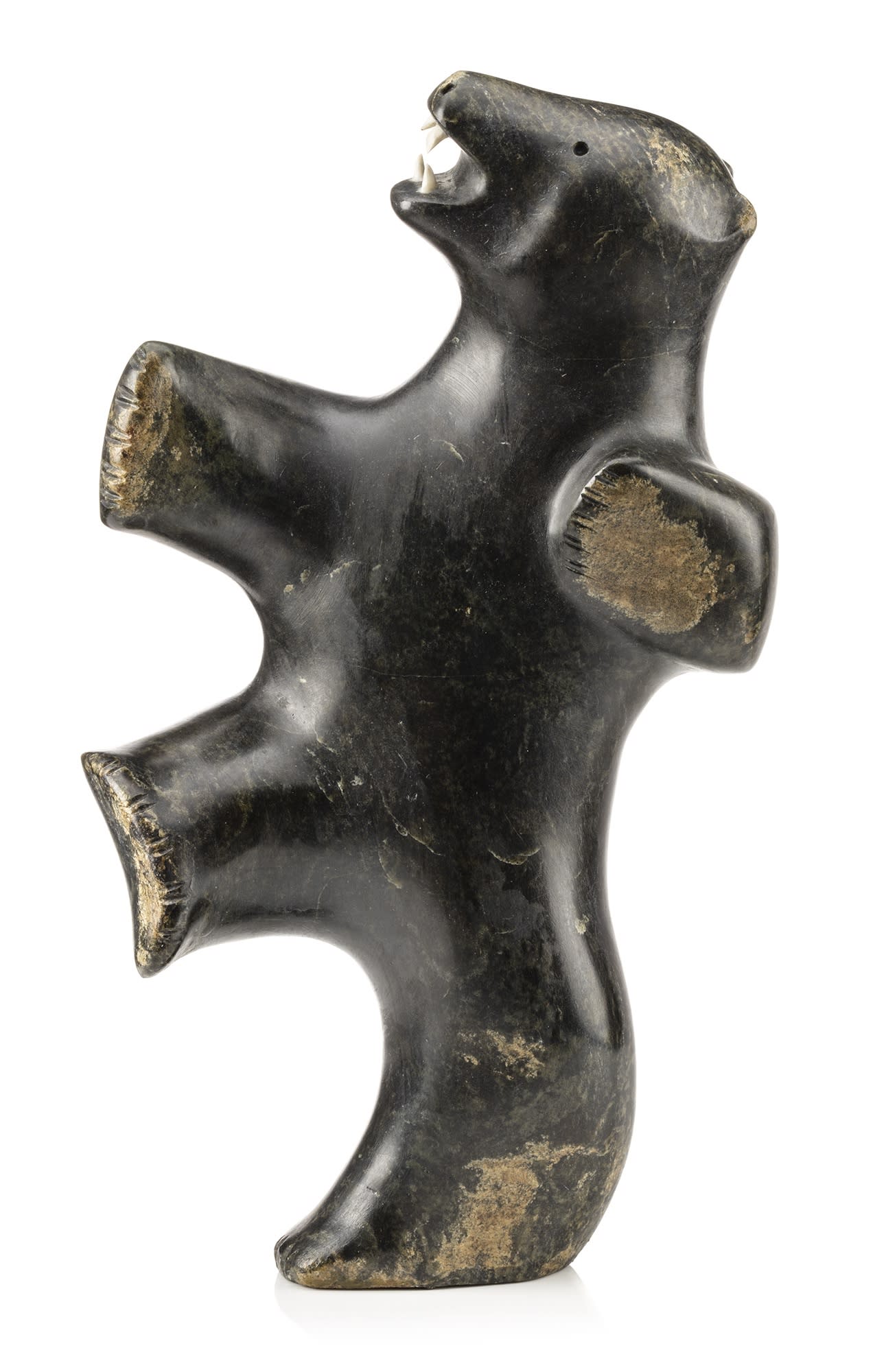
Lot 103
PAUTA SAILA, R.C.A. (1916-2009) KINNGAIT (CAPE DORSET)
Dancing Bear, c. mid 1970s
ESTIMATE: $15,000 — $25,000
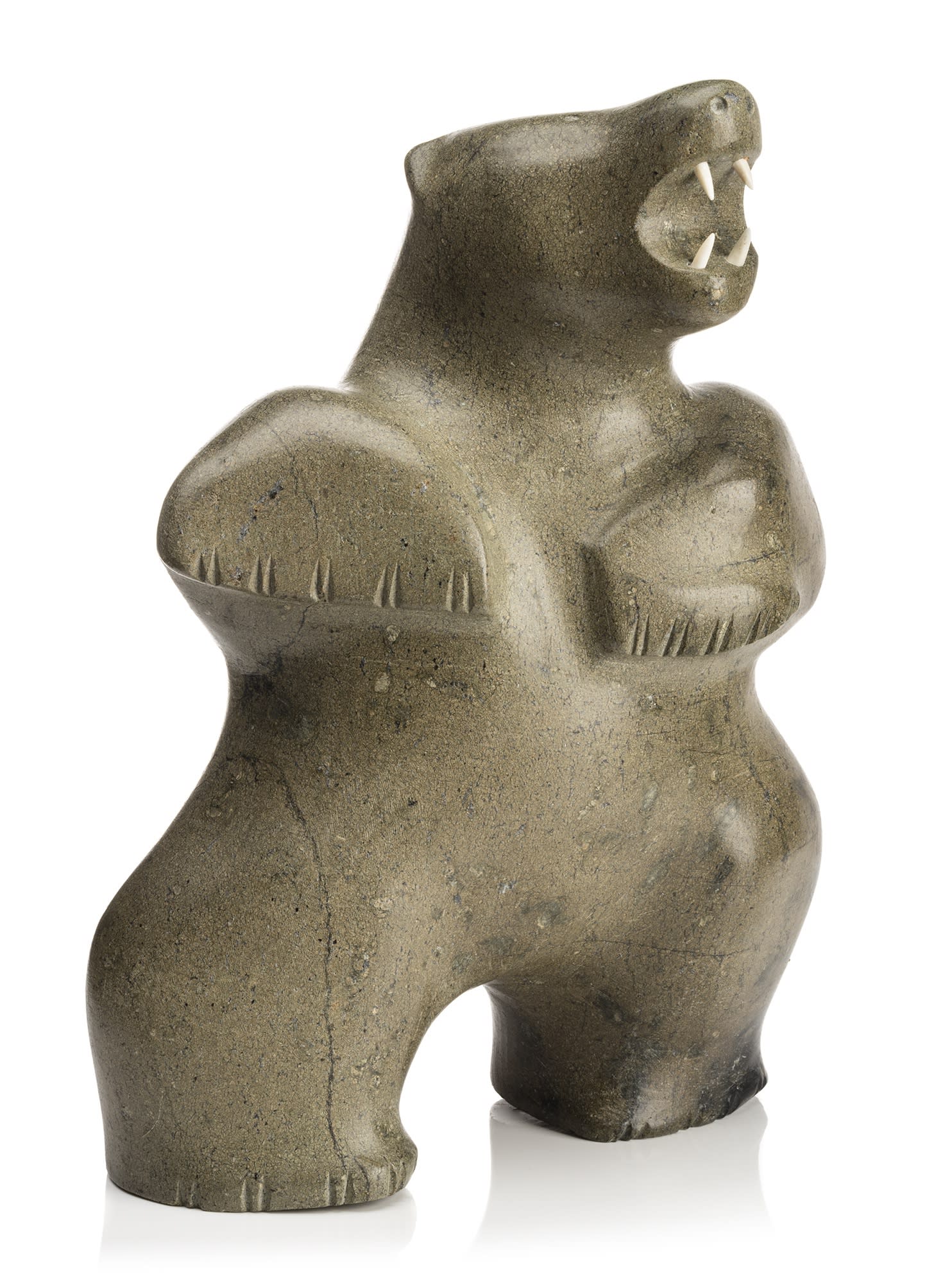
Lot 136
PAUTA SAILA, R.C.A. (1916-2009) KINNGAIT (CAPE DORSET)
Roaring Polar Bear, c. 1969-72
ESTIMATE: $15,000 — $25,000
Two more works by the Cape Dorset master reveal the breadth of Pauta’s style even when confined to a single theme. Lot 103 presents a lean Dancing Bear that is positively balletic in its grace and elegance. Our third “Pauta bear” (Lot 136) is the powerfully muscular and truly ferocious standing Roaring Polar Bear. These three very different sculptures constitute a perfect trifecta of artistic excellence.

Lot 117
HENRY EVALUARDJUK (1923-2007) IQALUIT (FROBISHER BAY)
Standing Polar Bear, 1971
ESTIMATE: $6,000 — $9,000
Of course, no discussion of Inuit polar bear sculptures would be complete without paying homage to the brilliant Henry Evaluardjuk. Whereas many talented artists were able to capture “bearness” or the spirit of the animal, many early examples were simplified in form until Henry Evaluardjuk entered the scene. Many collectors believe “Henry bears” to be the ne plus ultra of the genre. His elegant, naturalistic bears are almost photographic in their realism. In our striking Lot 117 we are presented with a formidable specimen, depicted in an anthropomorphic, upright position. Perhaps he has just raised himself up to gain a better view of his surroundings. One senses in the best of Henry’s bears an almost scientific observation of the subject, focusing on one specific bear at a time rather than trying to generalize. Those with a keen understanding of the species can look at Henry’s bears and differentiate young from old, male from female, and even hungry from satiated.
